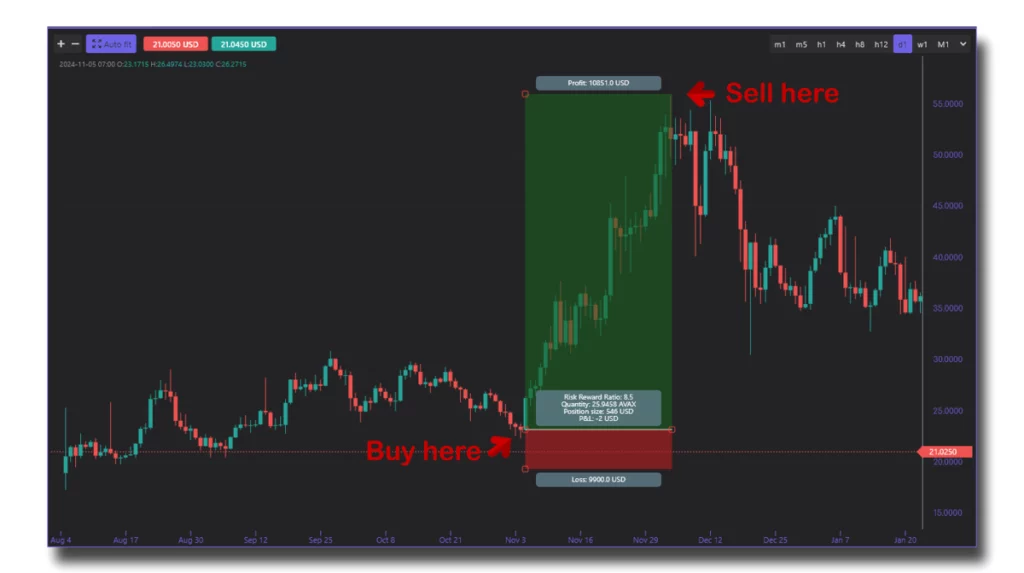Trading is one of the most dynamic and attractive financial activities today. Whether to generate additional income or pursue a full-time career, trading attracts more and more investors. But how does trading work? What are the basics to master before getting started? In this guide, we will explore the fundamentals of trading and the best practices for beginners.
What is Trading?
Trading involves buying and selling financial assets (stocks, currencies, cryptocurrencies, indices, commodities, etc.) on financial markets to make a profit. Unlike traditional investing, which relies on long-term strategies, trading focuses on short- to medium-term operations.
Different Types of Trading
- Day trading: Buying and selling assets within a single day without holding positions overnight.
- Swing trading: Holding positions for several days or weeks to capture market trends.
- Scalping: Very fast transactions (a few seconds to minutes) to take advantage of small price fluctuations.
- Algorithmic trading: Using automated programs to execute trading strategies.
Basics to Master Before Getting Started
1. Understanding Financial Markets
Financial markets consist of several asset classes. Before trading, it is essential to understand how stocks, forex, cryptocurrencies, and futures contracts work.
2. Choosing a Broker
A broker is an execution platform that allows access to financial markets and executes buy and sell orders. Choosing a reliable broker compatible with your preferred assets is essential. To use Flows.Trading, you need to connect to a supported broker, like Binance, OKX, Bitget, KuCoin, Alpaca, Kraken, Bitfinex…
However, a broker alone is not enough. It is crucial to use a platform like Flows.Trading to effectively analyze the market, track performance, and optimize risk management. Unlike simple execution platforms, Flows.Trading provides advanced technical analysis tools, a trading journal to track performance, and a structured approach to improving strategies over time.
3. Mastering Technical and Fundamental Analysis
- Technical analysis: Using charts, indicators, and chart patterns to predict price movements.
- Fundamental analysis: Studying economic, financial, and political events that influence the markets.
4. Managing Risk
A good trader knows how to manage capital and limit losses. To achieve this, it is essential to follow these rules:
- Use a stop-loss: Set a threshold to limit potential losses.
- Avoid over-investing: Never risk more than 1-2% of capital on a single trade.
- Diversify the portfolio: Avoid depending on a single asset type.
How Does Profit in Trading Work?
Profit in trading is generated by the difference between the purchase price and the selling price of an asset. Here is a concrete example:
Imagine a trader buys a stock at €100 and later sells it at €110. The gross profit is €10 per stock. However, transaction fees and possible taxes must also be considered.
Visual Example with a Candlestick Chart
The image below illustrates an example where a trader buys at a low price (green point) and sells at a higher price (red point) to make a profit:
This basic type of analysis is just the first step, but more advanced strategies will be covered in future articles.

Is Trading Easy?
The short answer is no. Trading is not easy and requires a solid understanding of markets, strict discipline, and continuous learning. However, that doesn’t mean it’s impossible! With the right tools and a structured approach, becoming a profitable trader is entirely achievable.
Flows.Trading provides a set of tools to facilitate technical analysis, track performance, and improve risk management using its trading journal. These tools help avoid common mistakes and gradually enhance trading strategies.
The key to success lies in practice, experience, and using the right tools to maximize success. Trading is a continuous learning process, and every trader must adapt their approach according to their profile and goals.
“Trading is like surfing. You have to wait for the perfect wave and not waste your energy on those that aren’t worth it. — Paul Tudor Jones
This quote highlights the importance of patience and selecting the right opportunities in trading. It reinforces the idea that success isn’t about constant action but about waiting for the right moment to strike.
How to Start Trading Successfully?
1. Get Educated
Before investing real money, it is crucial to learn. Read books, take online courses, and practice with a demo account to get familiar with the markets.
2. Define a Strategy
Every trader has their own market approach. Experiment with different strategies to find the one that best suits your style.
3. Manage Emotions
Trading is also a psychological challenge. It is important to stay calm and not trade under the influence of fear or greed.
4. Analyze Performance
Keeping a trading journal helps identify mistakes and improve strategies over time.
Conclusion
Trading can be a profitable activity, but it is not without risks. It requires discipline, proper education, and mastery of analytical tools. By following these tips, you can build a solid foundation for success in trading. Take the time to learn and practice before investing real capital.
Ready to start? Sign up on Flows.Trading and access advanced resources to enhance your trading skills!